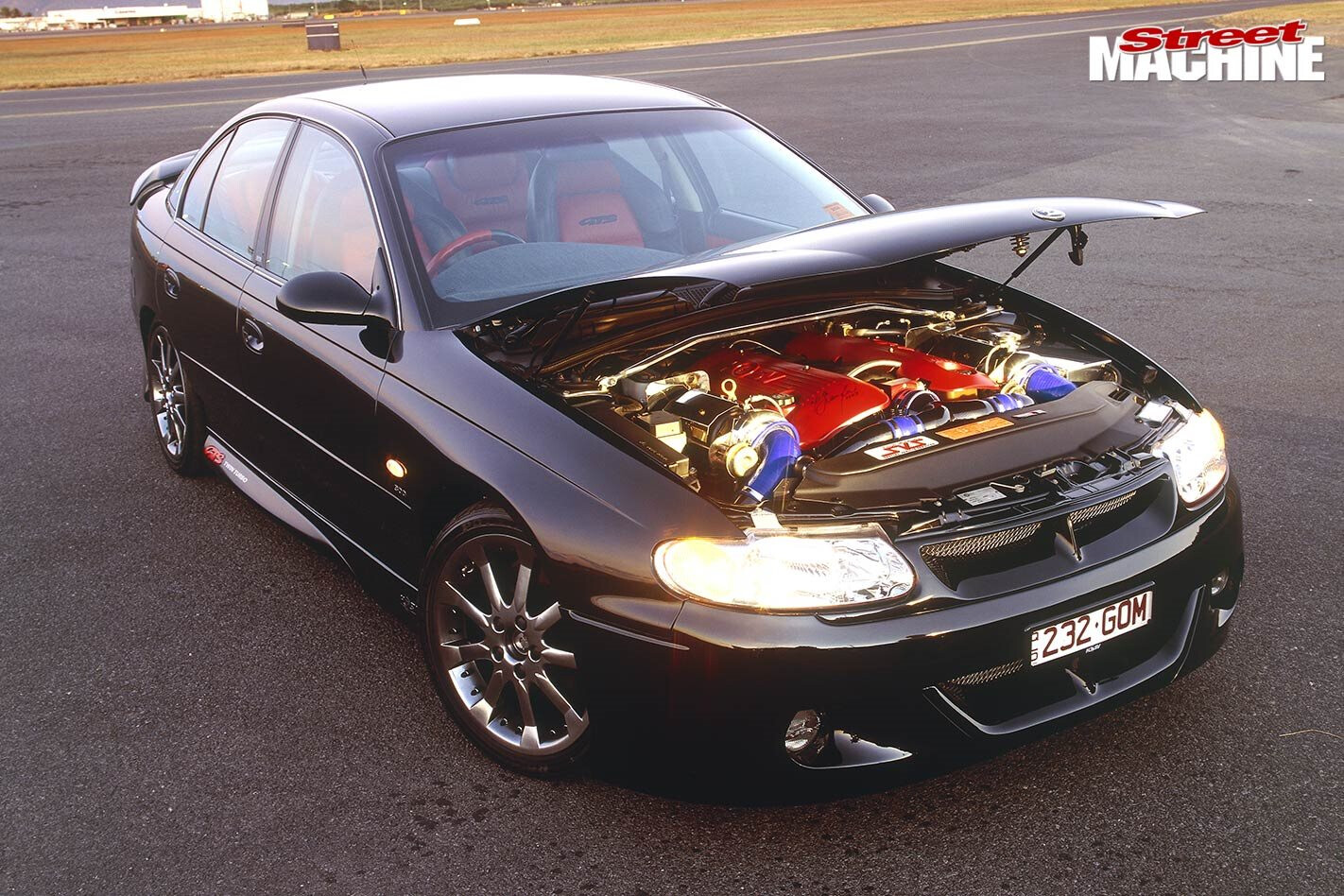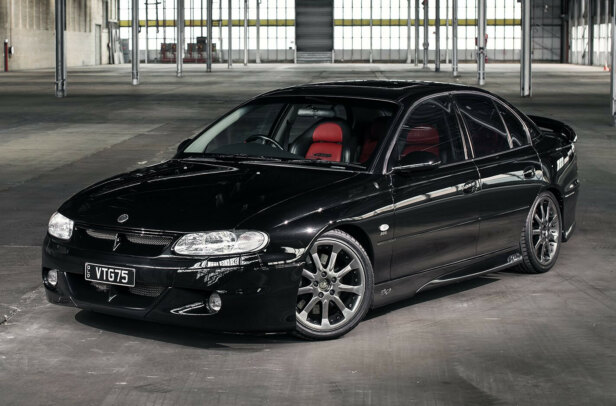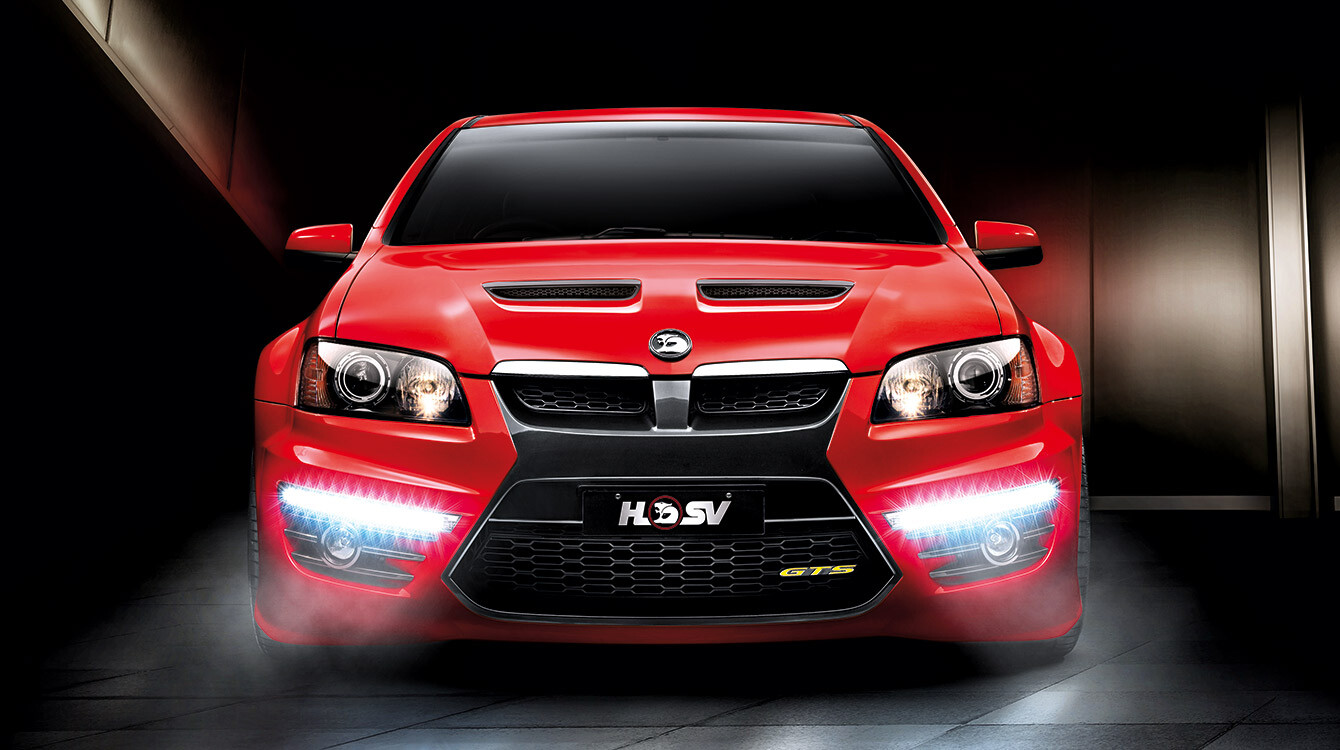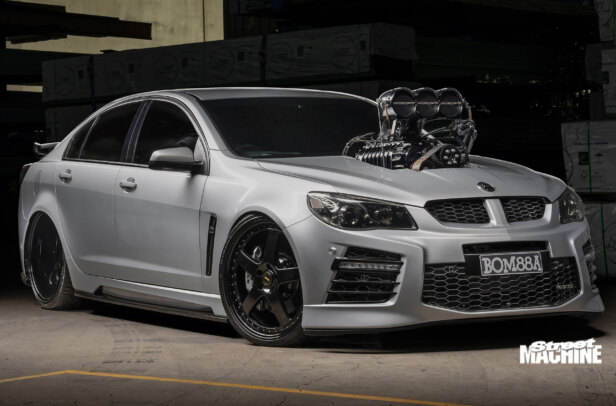WHEN Peter Thompson offered me a test drive of his GTS300, I was pretty damn excited. I’d previously spent a week in a later-model HSV GTS Coupe, but had never driven the evil, black original. For me, the VTII GTS has been a stand-out Australian muscle car since the day it was released.
This article was first published in the May 2005 issue of Street Machine
For starters the $91,200 beast shattered expectations of how much grunt an Australian production car could offer, with that magic 300 badge letting everyone know what it was packing. It had real exclusivity too, with just 300 units made. Then there was the mystique of the hand-built Callaway C4B donk, which not only easily outperformed the garden variety LS1, but looked about a million dollars better too.
The visuals were something else — Phantom Black duco (or the rare Sting Red), ultra-sexy shadow-chrome 18-inch rims that teased onlookers with glimpses of the equally lust-worthy premium brake package, and that crazy blood-red leather trim.
Topping it all off was the performance. For the first time we had an Aussie muscle car that unequivocally out-performed the Phase III GTHO in terms of pure grunt. Mid 13s were the numbers down the quarter, with its top speed limited to 256km/h. The car even had success at Bathurst in the 300km GT-P race in 2000, defeating the highly favoured Mitsubishi EVO VI and Subaru STi and winning — in the wet!
I’d been busting to actually drive one of these beasts for five years when Peter chucked me the keys to his baby. The icing on the cake? Nothing much … except this particular GTS has a couple of turbochargers hanging off the side! Standard, these cars made around 218kW at the wheels. This one spits out 390kW (523hp) on the rolling road, on just 7.5psi!
So yeah, I was just a tad nervous as I eased myself into the GTS’s opulent leather-clad interior. The blood-red trim is still outrageous and there are plenty of little details that set this car apart — factory short-shifter, specially calibrated speedo, shift light and more.
I flicked the key and the C4B sprang to life with a smooth idle, no lumps or complaints. At low speed you’d be hard-pressed to pick that this was anything but a factory car were it not for the restrained release of the blow-off valves upon gear change.
Out in the open the GTS took on a whole new demeanour. Nail it and there’s a slight pause as the turbos spool up. By around 3000rpm they start to make some real boost and it’s time to hang on! Launching it from a standstill, the tyres just go up in smoke — which would become a really expensive habit, real quick!
The roads around Cairns are smooth and the car’s clearly up to it — the premium brakes are fantastic and the ride, with multi-link IRS, is supple. The boosted engine is glorious, with an effortless surge of power in each gear. This would be the ultimate autobahn weapon — in the higher gears it doesn’t need to be wound up – it just bolts. By this stage you are controlling acceleration by backing off the throttle. As it is, we don’t have an autobahn and I don’t have that many points on my licence. I eased off and asked Peter how he came to build the beast.
He said that he was happy with the performance of his GTS – at first. But the factory car was just so capable in terms of brakes and suspension that it could easily handle extra power and that got Peter hungering more.
He spoke to Leigh Holman at Special Vehicle Service about what to do. Back then there were no aftermarket turbo kits available for LS1s, so Peter and Leigh decided to come up with their own. Even now, when there are four Australian-made turbo kits on the market, Peter’s set-up is unique in mounting a pair of internal-wastegate huffers high up in the engine bay. This method may not have the same thermal advantages of the more usual low-mount design, but you can’t beat it for visual impact!
Peter’s brief was simple. He wanted the system to be a true bolt-on deal, with no internal mods and no butchery.
The secrets of the twin turbo system revealed. The hot side of the kit (shown below), was treated with HPC to limit engine bay temperatures
“The idea was that I could fit the turbo system to the GTS and then remove it and put it on a Monaro later, all without hacking up the GTS and destroying its value,” Peter said. He also wanted to preserve all the beaut things about modern-day muscle cars — the reliability, reasonable fuel economy and good NVH.
No easy task, but it’s one that Leigh has pulled off with aplomb. The system was designed to disturb as little of the existing hardware as possible, with only ABS, the coils and the windscreen washer needing relocation. He made his own exhaust manifolds as well as the air-to-air intercooler which sits neatly behind the front bar. The engine bay’s details are sweet too, from the Modicoat-treated intake pipework to the neat heat shields over the exhaust housings. The exhaust housing and dump pipes were also HPC coated to keep the heat in the pipes as far as possible. Leigh plumbed the twin blow-off valves back into the intake system to make sure the gear change sneeze was kept way below rice-boy volume levels.
A Unichip interceptor takes care of the engine management side of things, while the fuel system has been upgraded with a set of Bosch 440 injectors and a Bosch 600hp fuel pump. The finishing touch is a full three-inch stainless steel dual exhaust system.
The GTS is Peter’s daily driver and as such he has no ambitions to punt it down the quarter mile. The rigours of getting the very best out of the car on the strip would be too cruel to inflict on this kind of car.
“Mind you, I said I’d never put it in a dyno shoot-out either,” Peter laughed even though he was somehow convinced to enter the GTS in the dyno comp at the 2004 Wild on Wheels show. The GTS took out the blown V8 class and while Pete had fun that night, he didn’t build the car to make numbers — he built it to please himself. The fact that he could take on some of FNQ’s toughest streeters and walk away on top is just a sweet bonus!
PETER THOMPSON
Twin Turbo VTII GTS300
Colour: Phantom Black
GRUNT
Engine: Callaway C4B
Induction: Twin T3 350hp Garret ball-bearing turbos; air-to-air intercooler; twin GFB blow-off valves
Fuel system: Bosch 440cc injectors; Bosch 600hp fuel pump
ECU: Factory with Unichip
Exhaust: Custom exhaust manifolds; three-inch system; twin cats
SHIFTING
Box: T56 six-speed
Diff: Hydratrack, 3.91:1
Brakes: 343mm cross-drilled discs (f); 315mm cross-drilled discs (r); four-piston calipers all ’round
ROLLING STOCK
Rims: Factory HSV alloys, 18×8
Rubber: Bridgestone SO2 235/40





Comments